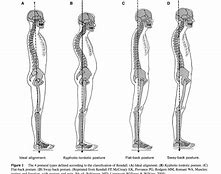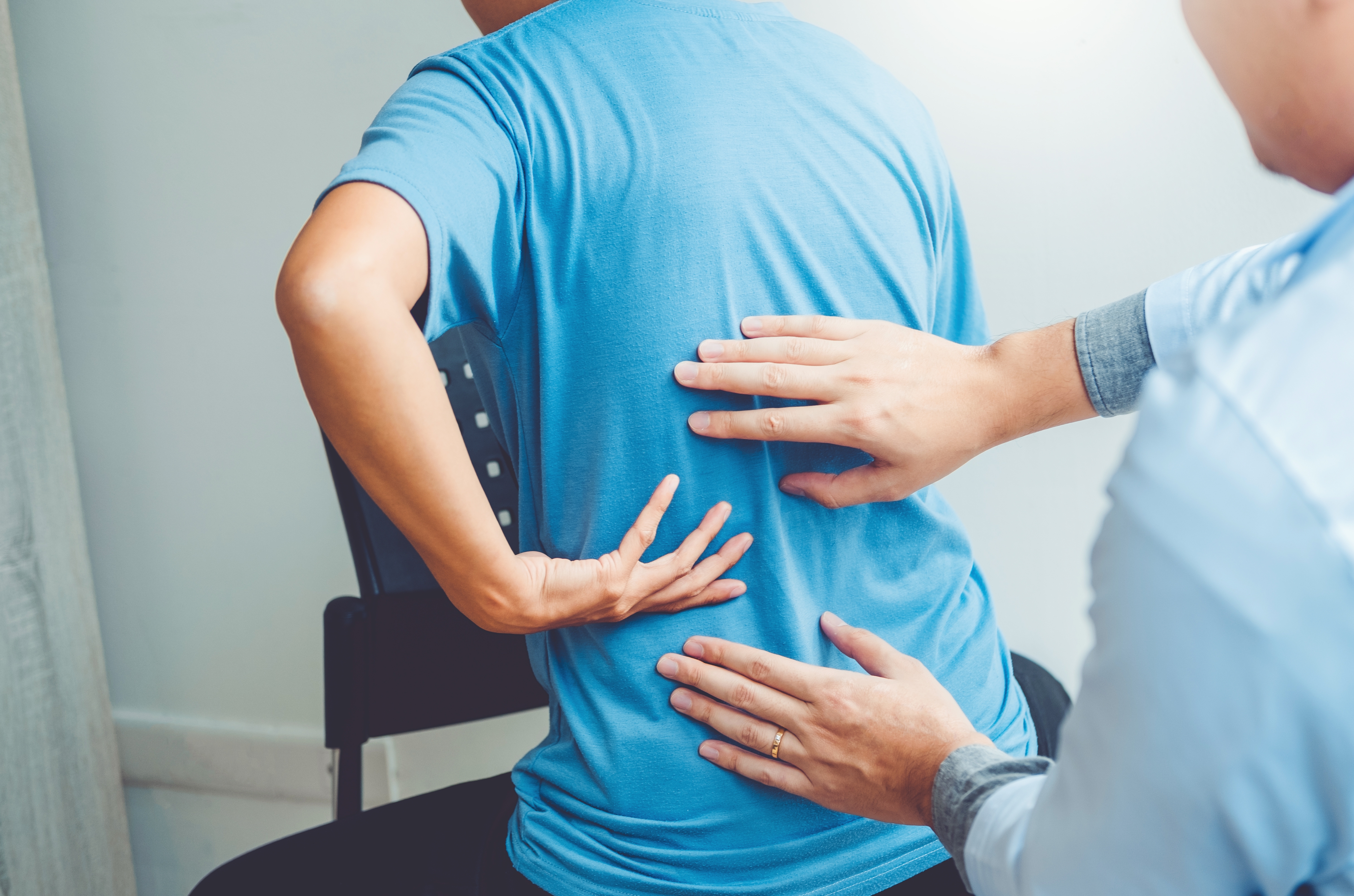Low back pain (LBP) is one of the most common ailments that chiropractors treat. That’s probably because MOST of us will suffer from low back pain that requires outside help at some point in our lives! Posture has long been studied as a potential cause of low back pain.
A December 2014 study looked at low back posture in two groups of LBP patients and its relationship with problems associated with intervertebral disk diseases. Looking at a person from the side, the low back area has an arched or inward curve. This is called the “lumbar lordosis” (or, the “sway back” area), and this can be highly variable in terms of the angle or amount of arch. It normally differs between males and females. Degenerative disk disease (DDD) is a common condition affecting virtually all of us at some point in time. DDD results in narrowing of the disk spaces. There are five total in the lumbar spine (twelve in the thoracic spine/mid-back, and six in the cervical spine/neck).
One particular study evaluated a group of 50 patients with long-term intractable (chronic) low back pain with intervertebral disk disease and a group of 50 chronic LBP patients without DDD that served as a “control group.” Researchers measured the degrees of lordosis, or amount of curve (lumbar lordosis), by looking at the person from the side using two different methods in the two patient groups and compared the data. The group with degenerative disk disease had an overall reduction in the lumbar lordosis curve (less arched) using both methods of measuring. The authors concluded that the patients with intervertebral disk lesions had a straighter, or more flat curve (less sway back), when compared to those without disk degeneration. What they were unable to determine was which came first, the disk degeneration or the reduction in the lumbar lordosis?
When treating patients with low back pain, some patients feel better when placed in a forward bent position, or they favor a flat low back curve. Others have a preferred position of preference favors a more curved lower spine. The reason for this difference is that LBP is generated from different tissues in the low back, and some tissues favor or feel better in one position and typically feels worse in the opposite direction when injured.
The disk is approximately 80% water, and as we age, the water content gradually reduces and the disk spaces narrow. More importantly, DDD usually narrows the size of the canals through which the spinal cord and nerve roots travel. When we bend forward, these canals open up wider placing less pressure on the nerves and/or spinal cord.
This is why we often see elderly people leaning on grocery carts when shopping, as it hurts less and they can walk longer / farther. Those with herniated disks tend to be the opposite, as they favor bending backwards as this position shifts the nucleus or liquid center forwards and away from the nerve root thus reducing the pinched nerve resulting in less or complete elimination of radiating leg pain.
Back Pain: Ice or Heat?
Ice and heat are commonly confused when it comes to taking care of an injury at home. Not many people know what the difference between each remedy is. Ice is used to decrease swelling of an area or an injury, meaning it is usually used for fresh injuries. A better choice with an acute injury is to ice the area, but this also needs to be done with some caution. The simplest ice pack is ice cubes placed in a plastic bag. When you first ice the area, you will go through several phases before some pain relief is achieved.

Heat is used for chronic pain, pain that seems to never vanish. Muscle pain can be quite severe and heat can sometimes soothe the pain. For this reason, many patients take to the heating pad or to the hot tub to try and get some relief. This should be avoided in an acute injury because inflammation is present. With inflammation, there is increased heat and the additional heat you provide is like adding gasoline to a fire. The results are usually not good.
Many patients perform some self-care when they first hurt their lower back, hoping this will keep them out of a doctor’s office. While home remedies can sometimes make the pain go away, sometimes they don’t. It just depends on what you try. When the back is first hurt, it’s often a sprain/strain type of injury with accompanying muscle spasm.
When a nerve in the low back becomes pinched or irritated, the body will protect the delicate nerves by keeping you from moving and risking further nerve injury. The easiest way for the body to do this is to cause the back muscles to spasm in the injured area.

